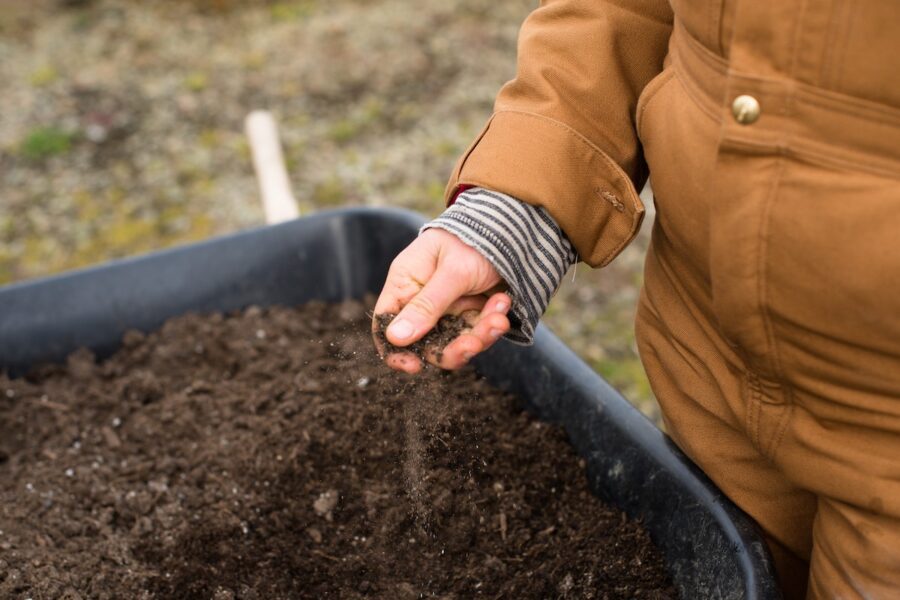Do you love evergreen plants with berries? Then this shrub is a perfect addition to your garden or pot plant collection. Taking care of a David Viburnum plant is easy, even when you have never even heard of this variety.
With the correct watering and feeding routine, this glossy beauty can attract songbirds to your garden for years. Our guide gives you all the top tips to keep your David healthy and happy.
Table of Contents
Origins and Appearance
These days, you can find this plant in gardens all over the world. But originally, David Viburnum hails from western China. If you are a plant buff, then you already know that some of the most beautiful plants are native to the east and this one has the same oriental charm.
This is a shrub that likes to stay small but at its peak can develop into a dome-shaped plant that is roughly 5 feet (150 cm) tall. The shrub has glossy, dark green leaves. Younger leaves have a lighter green color which often gives the plant an attractive two-toned appearance.
In the spring, clusters of tiny white flowers appear. The petals often have a tinge of pink. The flowers mark the locations on the plant where you can expect the berries to follow. The berries are small and metallic blue.
Temperature and Humidity
The good news is that your new David is a hardy little guy. It can tough out most temperatures and humidity levels, making it an ideal plant for the beginner or someone who cannot spend hours on plant maintenance.
But this plant is not invincible! Let’s cover the things you must keep in mind to protect your David from harmful temperature-linked situations.
This shrub thrives in partial shade, especially when its location allows it milder afternoon sun. Planting it in full, harsh sunlight will slowly destroy your David and it definitely won’t flower or bear berries as much. Even when planted in partial shade, you need to keep an eye on the shrub during hot days and summer to ensure that it does not wilt. In case you notice that the soil is dry or the leaves are looking sad, a good watering is the best medicine.
Watering and Feeding
This Viburnum variety does not always do well on an automatic irrigation system. The latter can, in certain situations, provide too much water and ultimately drown the plant. But at the end of the day, your David’s watering needs are not complicated.
Some owners like to give their plants a deep watering once a week. However, rather err on the side of caution and test the soil first. Stick a finger deep into the soil and if the earth is still moist, you can wait a few more days. But when the earth is clearly dry, give that David a drink!
When it comes to feeding, the David Viburnum variety is not a hungry plant. It will do well with a slow-release fertilizer given once a year. Just make sure that you use a non-toxic fertilizer to keep your pets and wildlife safe.
Soil and Repotting

This Viburnum variety can grow in normal garden soil. However, it might struggle to flourish if the location is not suitable for acidic-loving plants. Soggy soil is also not a good idea. The best soil for your David should be cool, moderately fertile, and well-draining. This plant also makes a great pot plant. Simply use quality potting soil from your local nursery and you are all set.
Potting your David is also a low-maintenance job. After you obtain the potting soil, the next step is to grab a pot that is big enough for the plant. It should be deep enough to add a good layer of soil between the bottom of the pot and the plant’s rootball. Only re-pot your shrub when the plant becomes too big for its container. It is also a good idea to re-pot once a year to replenish the soil’s nutrients.
Get all the best tips on how to re-pot your house plants.
Pruning
Your David needs a haircut every now and again – especially if you want the shrub to maintain its compact form. You can schedule a pruning in early summer and remove all the dead, broken and diseased branches. In order to keep the plant’s round shape, also remember to snip off any healthy shoots that are so leggy or wayward that they are ruining the David’s trimmed look!
Pests and Diseases
Here is another reason why beginners love this beautiful shrub. Pests and diseases seem to give this plant a wide berth. So, if you want to add a lovely and exotic-looking plant to your collection without the stress of dealing with plenty of diseases, then a David Viburnum is a good choice!
That being said, a David Viburnum is not invincible (regrettably!). Sometimes, you might notice that something is wrong with your plant and wonder what to do. Let’s have a look at the symptoms of the most common problems and their solutions.
Common Pests
All Viburnum varieties are threatened by a single beetle. Aptly called the Viburnum leaf beetle, it can cause serious damage to a plant. When you notice a beetle chewing on the leaves, an organic pesticide can help. It is also a good idea to remove any eggs that you might notice on the leaves or stems.
Common Diseases and Problems
When black spots or white growths appear on the leaves, the issue is usually a fungal infection. In order to save the plant and prevent the disease from spreading, it is important to act as quickly as possible. Spray the affected areas with an organic fungicide. For good measure, treat any plants around the sick David to give them extra protection as well.
Leaves that are yellow or stunted could be a sign of a more serious disease. Called Armillaria root rot, it often appears with an additional symptom which is a white growth under the plant’s bark and leaves.
This white stuff is a destructive fungus and once it reaches the stage where it is under the bark, the plant cannot be saved. Prevention is best and such measures include correct watering and plenty of air circulation.
Another fungal problem is called canker. The symptoms also affect the leaves but this time, the leaves appear discolored, wilted or outright dead. The most common reason why Viburnum plants become susceptible to this fungal disease is stress.
It can be water, heat or nutritional stress. The most effective cure is two-fold. Use an organic fungicide to get rid of the disease and restore the plant by providing the correct care in order to remove the stress.
FAQ

Most Viburnum varieties grow between 12 and 24 inches per year. If you want something less energetic, the dwarf varieties only grow about 6 inches a year.
A potted David will flourish in a sunny window sill or room. Bear in mind, the plant might not do well when constantly exposed to full, hot sunlight. It can handle several hours of direct sunlight and will definitely appreciate some shade during the morning or afternoon.
The problem is likely the location or soil. When your David receives too little sunlight, this might reduce the number of flowers. Discovering the sweet spot of not too much sun – or too little – can take time but when you do, your plant’s flowers will increase. Well-draining soil is also necessary for a David to bloom well.
The short answer is no. The berries are mildly toxic and since the shrub is a low plant, the fruit might be ingested by pets and children. The effects are said to be limited to stomach troubles. However, you never know how a pet or child will react when ingesting a toxic berry, so rather get another plant or elevate your David so that it remains out of reach.
David Viburnum plants can be propagated at home. You can plant seeds but this road is often long and unsatisfying. Most gardeners have better results when they take cuttings from their David shrubs.
